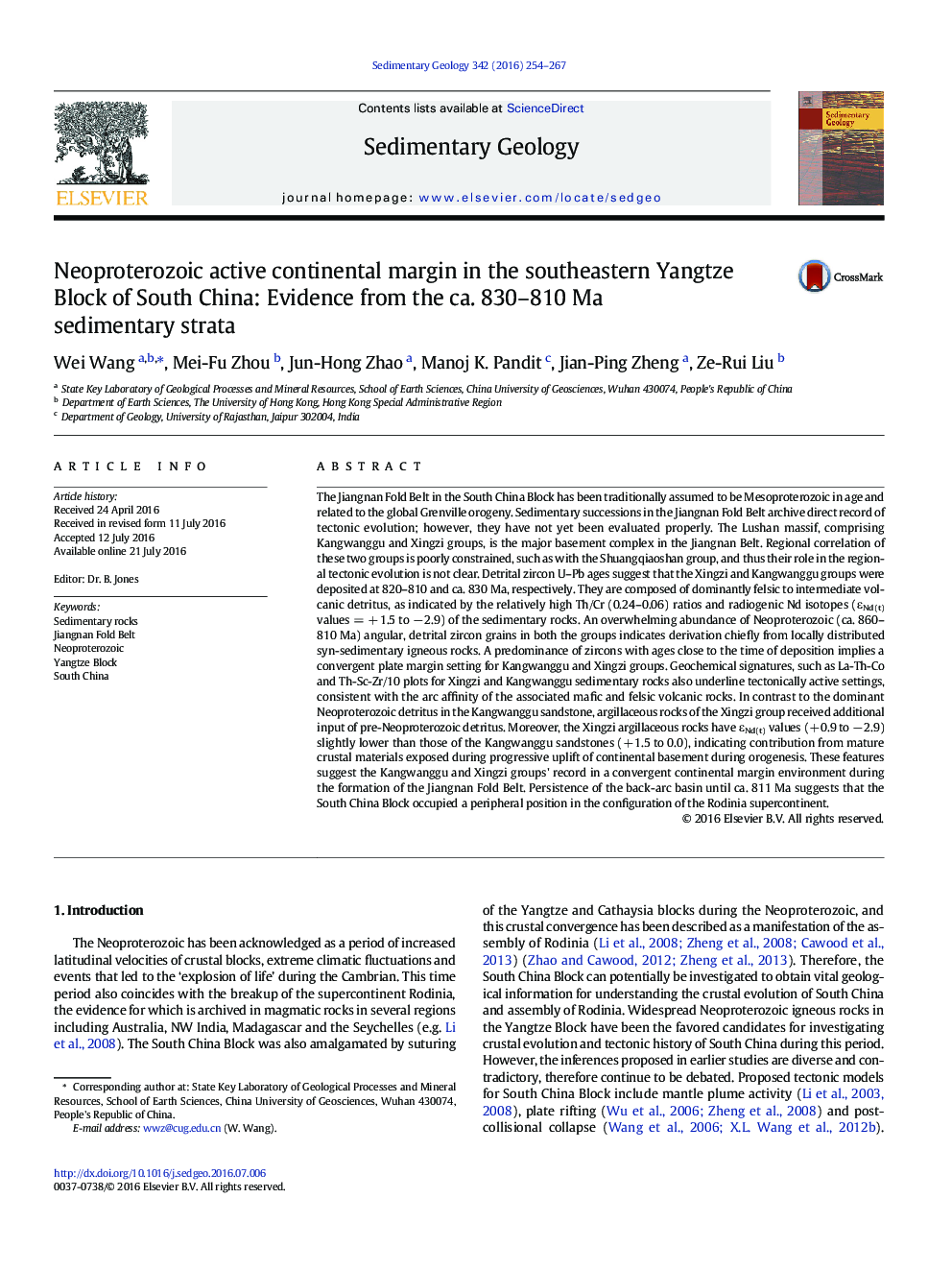| کد مقاله | کد نشریه | سال انتشار | مقاله انگلیسی | نسخه تمام متن |
|---|---|---|---|---|
| 4688994 | 1636021 | 2016 | 14 صفحه PDF | دانلود رایگان |

• The Kangwanggu and Xingzi groups in eastern Jiangnan Folded Belt deposited between 829 and 827 Ma and 820–811 Ma
• They deposited in a back-arc basin.
• The Jiangnan Folded Belt in South China lasted until ~ 811 Ma or even later.
• The South China was located in the periphery of Rodinia supercontinent.
The Jiangnan Fold Belt in the South China Block has been traditionally assumed to be Mesoproterozoic in age and related to the global Grenville orogeny. Sedimentary successions in the Jiangnan Fold Belt archive direct record of tectonic evolution; however, they have not yet been evaluated properly. The Lushan massif, comprising Kangwanggu and Xingzi groups, is the major basement complex in the Jiangnan Belt. Regional correlation of these two groups is poorly constrained, such as with the Shuangqiaoshan group, and thus their role in the regional tectonic evolution is not clear. Detrital zircon U–Pb ages suggest that the Xingzi and Kangwanggu groups were deposited at 820–810 and ca. 830 Ma, respectively. They are composed of dominantly felsic to intermediate volcanic detritus, as indicated by the relatively high Th/Cr (0.24–0.06) ratios and radiogenic Nd isotopes (εNd(t) values = + 1.5 to − 2.9) of the sedimentary rocks. An overwhelming abundance of Neoproterozoic (ca. 860–810 Ma) angular, detrital zircon grains in both the groups indicates derivation chiefly from locally distributed syn-sedimentary igneous rocks. A predominance of zircons with ages close to the time of deposition implies a convergent plate margin setting for Kangwanggu and Xingzi groups. Geochemical signatures, such as La-Th-Co and Th-Sc-Zr/10 plots for Xingzi and Kangwanggu sedimentary rocks also underline tectonically active settings, consistent with the arc affinity of the associated mafic and felsic volcanic rocks. In contrast to the dominant Neoproterozoic detritus in the Kangwanggu sandstone, argillaceous rocks of the Xingzi group received additional input of pre-Neoproterozoic detritus. Moreover, the Xingzi argillaceous rocks have εNd(t) values (+ 0.9 to − 2.9) slightly lower than those of the Kangwanggu sandstones (+ 1.5 to 0.0), indicating contribution from mature crustal materials exposed during progressive uplift of continental basement during orogenesis. These features suggest the Kangwanggu and Xingzi groups' record in a convergent continental margin environment during the formation of the Jiangnan Fold Belt. Persistence of the back-arc basin until ca. 811 Ma suggests that the South China Block occupied a peripheral position in the configuration of the Rodinia supercontinent.
Journal: Sedimentary Geology - Volume 342, 1 August 2016, Pages 254–267